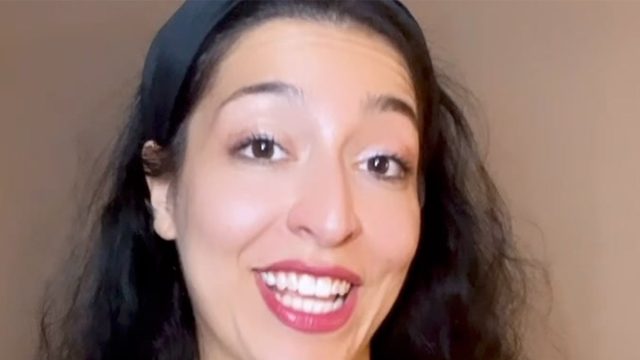5 Things I Eat to Amp Up My Protein Intake Without Extra Calories
Eating enough protein is an important component of building muscle and losing weight. Research has found that consuming more protein than the recommended dietary allowance reduces body weight — but that's not all. It also enhances body composition by decreasing fat mass while preserving fat-free mass in both low-calorie and standard-calorie diets. So, how do you amp up your protein intake without going overboard calorically? Mahtab Ekay is a fat loss coach and Instagram influencer who regularly shares about her personal weight loss journey. In a new social media post she reveals a handful of low-calorie, high protein foods. "When I need more protein without extra calories, here are 5 things I eat," she writes.
Calorie Deficit + High Protein = Muscles and Fat Loss
"If you are focused on fat loss, you can easily do that by hitting these two goals every day," she writes. The first goal? "Calories to put you in a calorie deficit," she says. And number two? "Protein to make sure you are preserving and even building as much muscle as you can," she says. "And that's exactly what these five food ideas will help you do. Low cal yet high protein."
High-Protein Pancake
You can eat pancakes and lose weight with Mahtab's High-Protein Pancake recipe, which has just 365 calories and 33.3 grams of protein.
Ingredients:
- 1 ripe banana
- 2 large eggs
- 1 scoop protein powder (30g)
- 1/4 tsp baking powder
- 1/4 tsp cinnamon (optional)
- Cooking spray or coconut oil.
High Protein Smoothie
Her next recipe? A High-Protein Smoothie with 295 calories and 32 grams of protein.
Ingredients:
- 1 cup unsweetened almond milk
- 1 scoop protein powder (30g)
- 1/2 cup Greek yogurt
- 1/2 cup frozen berries
- 1/2 cup pineapple chunks.
Egg & Egg White Omelette
Another breakfast meal that keeps her fueled up? An Egg & Egg White Omelette with 224 calories and 26.8 grams of protein.
Ingredients:
- 2 whole eggs
- 4 egg whites
- 1/4 cup diced tomatoes
- 1/4 cup chopped spinach
- 1/4 cup diced bell peppers
- Salt and pepper
- Cooking spray.
Greek Yogurt Berry Parfait
If you are craving something sweet, try her Greek Yogurt Berry Parfait with just 235 calories and 23.5 grams of protein.
Ingredients:
- 1 cup non-fat Greek yogurt
- 1/2 cup mixed berries
- Stevia or 1 tbsp honey (64 cal, optional)
- 1/4 cup low-sugar granola.
Tuna Sandwich
Yes, you can eat sandwiches and still lose weight. Her Tuna Sandwich recipe boasts 35.6 grams of protein with just 305 calories.
Ingredients:
- 1 can of tuna in water (5 oz)
- 2 tbsp Greek yogurt
- 1 tbsp Dijon mustard
- 1 tbsp chopped celery
- 1 tbsp chopped red onion
- 2 slices whole grain bread
- Lettuce leaves.
How Much Protein Should You Eat Per Day?
In another post, she reveals how much protein you should try and eat per day. "Aim for 0.8–1g per pound of your ideal body weight in pounds. Focus on high-protein foods like chicken breast, lean beef, fish, eggs, tofu, cottage cheese, Greek yogurt, or protein powder," she writes.
RELATED: I Dropped 50 Pounds and Lost My "Pooch" by Doing This One, Simple Exercise
Strength Train with a Structured Lifting Plan
You should also do strength training and follow a structured lifting plan, she says. "Start with a 3-day program: 3 full-body workouts, or 1 upper, 1 lower, 1 full-body session per week. Key: Track your sets and reps and progress weekly—whether by lifting heavier, doing more reps/sets, or increasing time under tension."
Stay Active Daily and Do Cardio
Daily activity and cardio are also key for fat loss. "Steps: Aim for 8–12k steps/day as a goal. As a general rule, you can walk 1,000 steps in about 10 minutes. For example, an easy way to hit 5,000 steps is to take a 20-minute walk in the morning. Add 10-minute walks after each main meal. Cardio: If you want to add low-intensity cardio (like cycling, Stairmaster, or treadmill), aim for 15–20 minutes, 1–3 times per week, after your workouts."
Here's How to Calculate Your Deficit
And, make sure to eat the right amount of calories, by using her formual. "You need to eat in a slight calorie deficit. To find this: First, calculate your maintenance calories. Then, eat 100–200 calories below that to lose fat without sacrificing muscle." And if you enjoyed this article, take advantage of these 15 Quick Ways to Lose Body Fat Percentage in a Week.





